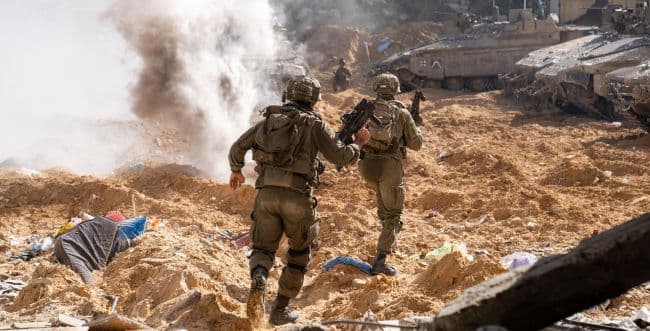The price for Bibi's risk aversion
How long can Israel continue its pseudo war with Hamas? And is the IDF really ok?
Netanyahu clarified his refusal to accept a comprehensive hostage deal, while the option to "go all in" remains on the table – even at the cost of losing legitimacy.

Prime Minister Benjamin Netanyahu’s statement yesterday (Saturday) proved that the path to retrieving the 59 hostages still held in the Gaza Strip is even more complex than previously thought.
However, as time passes, patience is wearing thin, among the Israeli public, which has been at war on multiple fronts for 562 days; among Gazans, who are pressuring Hamas through protests and are exhausted from moving north and south within the Strip; and among mediators trying to bridge the gaps between the sides.
Where do we go from here? Channel 12 outlined the options on the table.
Over the weekend, intense IDF activity was recorded in the Gaza Strip: forces eliminated over 40 terrorists and destroyed 150 terror targets. Air Force operations are also intensifying to implement the government’s directive: to apply calculated and intense pressure aimed at defeating Hamas and securing the hostages’ release through negotiations under fire.
As the maneuver deepens, we are witnessing more encounters with terrorists. Fighters are once again exposed to increased fire, more explosives, and more anti-tank squads, raising the central question: Do the top brass know the key objectives on the path to the ultimate goal?
Israel has been engaged in this operation for a month, and the question no one wants to think about is whether it has exhausted itself. So far, there has been no significant progress. While many targets have been destroyed, no real breakthrough has been achieved, and those eliminated are not the top leaders of the terror organization.
But more than that, we are still fighting a seven front war. If you consider that the Houthis have largely been quietemed thanks to Trump\s might, that leaves 6 volatile fronts, any of which could blow up in our faces, quite literally, at any moment. And the worst question is what would happen then? When the reservists are exhausted? That's the real price of Netanyahu's aversion to any real action. An army which is mighty, yes, but exhausted and running on fumes.
Against the backdrop of Netanyahu’s refusal to accept a hostage deal that includes ending the war, arguing that it would “send a message to all of Israel’s enemies that kidnapping Israelis can bring the state to its knees,” another option exists: to say “enough is enough” and go all in. Israel retains the option to occupy the entire Gaza Strip, distribute humanitarian aid itself, or employ an American company to do so on its behalf. Such a move would provoke widespread public criticism given the costs Israel might pay, domestically and internationally.
It's also questionable whether Trump would support it. Because although he offered Netanyahu his full backing to open the Gates of Hell on Gaza, he has come to believe that what everyone in Israel wants above all else is the return of the hostages. He's not right about that, obviously. We all want the hostages back, but if the price of getting them back is that Hamas and every other terror group learns that it's worthwhile to take Israeli hostages and torture them it could easily lead to a vicious cycle, especially considering the illegals who keep penetrating Israeli territory, and the constant threat from the Arab areas of Judea and Samaria.
If the government tells the public that all options have been considered and there is no way to release the hostages, Israel would need to mobilize hundreds of thousands of reservists and stand at the threshold of an unprecedented campaign. Such a campaign could defeat Hamas but would simultaneously damage the government’s legitimacy and draw massive public criticism.
Alongside Foreign Minister Katz’s clarification that Israel will distribute humanitarian aid itself, Israel has asked the Americans to pressure mediators on the issue. It is estimated that only one month remains until humanitarian aid and food in the Strip run out, which could lead to increased insistence by mediators on this sensitive matter.
The renewal of protests in Beit Lahia is evidence that Gazans, too, are fed up with the terror organization’s exploitation. As IDF activity in the Strip intensifies, displaced residents who had returned to their homes find themselves homeless again. While the most extensive evacuation occurred in Rafah, the largest protests are taking place in the northern Strip.
Beit Lahia, a city unfamiliar before the war, has become the epicenter of protests – increasingly posing a challenge to the Hamas terror organization. During a protest held just four days ago, Hamas members took to the streets and, at one point, raised signs in support of the organization, sparking anger among protesters and even physical altercations at the scene.